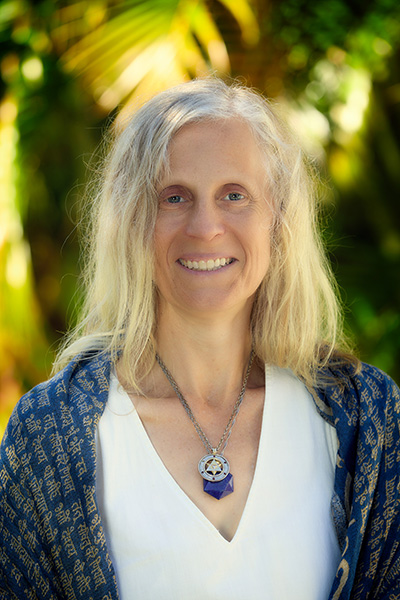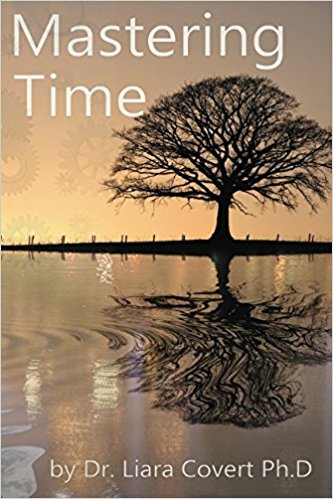Healthcare tourism: more than a joyride
 Saturday, April 21, 2007 at 10:05PM
Saturday, April 21, 2007 at 10:05PM The Western middle class dreams of quicker access to better healthcare. This increasingly leads people to travel abroad for medical and dental treatment. Health tourism has emerged partly due to Western systems being unable to handle growing patient numbers, inflating costs and staggering insurance demands. Health tourists are drawn abroad when outdated health systems struggle to curtail expenditure and do not always offer acceptable solutions and when private medical care remains a costly alternative. Consider how key issues of a) waiting time b) procedures & prices and c) reputation & credentials, are redefining global healthcare.
Waiting Time
Serious health problems lead people to seek ways around long waits for treatment. This is a major issue in public hospitals common in Western Europe and Canada. According to the Fraser Institute, reporting results from its annual survey, the total wait time for patients in Canada between referral from a general practitioner (GP) and treatment, averaged across all 12 specialties (and 10 provinces surveyed), grew to 17.8 weeks in 2006 from 17.7 weeks observed in 2005. In 77% of categories surveyed, the opinion was “actual wait time exceeded reasonable wait time.”
Stage one : The waiting time between referral by a GP and consultation with a specialist rose to 8.8 weeks from the 8.3 weeks recorded in 2005.
Stage two : The waiting time between specialist consultation and treatment fell to 9.0 weeks from 9.4 weeks in 2005.
Stage three : Among the various specialties, the shortest total waits (between referral by a GP and treatment) occurred in medical oncology (4.9 weeks), radiation oncology (5.0 weeks), and elective cardiovascular surgery (8.0 weeks). Patients waited longest between a GP referral and orthopaedic surgery (40.3 weeks), plastic surgery (35.4 weeks), and neurosurgery (31.7 weeks). During the interim, tumors and other problems can escalate.
People statistically seek foreign options for life-threatening cases, but also by choice to reduce discomfort and increase mobility. In some parts of Britain and Canada, elective surgeries like hip replacements, require a waiting period of nearly a year. Quicker, easier access in Bangkok (Thailand) or Bangalore (India) allows patients to get relief in the operating room the day after arrival. Convenience incentives are as appealing as the price and included vacation.
Procedures & Prices
Governments are often unwilling to pay for private, cosmetic and alternative procedures, and affordable insurance coverage has limits. Medical tourism offers procedures at 20-80% lower medical and insurance costs, including hospital stay in private room. Consider travel in Dub ai , Costa Rica, China, Cuba, India, Hungary, Malaysia, Mexico, South Africa or Thailand, where Westerners can afford cosmetic or remedial surgery combined with a vacation. Available procedures are extensive. Prospective patients are encouraged to compare shop. Promotional websites outline menus of available procedures and invite contact for details.
Dental Work
A metal-free, dental bridge worth $5,500 in the U.S. costs around $500 in India. In Thailand, costs for root canal & cap front tooth: 14,000Thb/US$354/ AUD$481/EU284. The Asavanant Clinic in Bangkok offers affordable prosthodontics, restorative, orthodontics, dental surgery and even basic procedures.
Cardiology
Angioplasty runs Cdn$3,000-4,000, and in the US$1,650. Compare Pruthi Hospital in Punjab, India; where angioplasty goes for US$600. Pruthi also offers a menu of cardiac procedures (i.e., pacemakers, valve replacements, cardiology CABG) with significant discounts if you bring a companion to undergo the same procedure.
Heart Bypass
George Marshall, a 73- year old British citizen, didn’t wait 6 months for a heart bypass operation from the British National Health Service (NHS) or pay £19,000 for same operation at a private hospital. Instead, he paid £4,800 for the procedure in India, including a return flight from UK. In India, Research reveals heart bypass procedures average ~US$10,000, in Thailand ~ US$11,000, and in Singapore ~US$18,000. Back in the U.S., it often costs up to $130,000 and waiting in Canada can be disconcerting. Compare gastric bypass surgery in U.S. around $10,000 -$20,000. Abroad, it’s available under US$5,000.
Heart valve replacement & general surgery
Consider the cost of a heart-valve replacement in the U.S. is about $200,000, as compared with about US$10,000 in India (including a vacation). The cost of general surgery in India, Thailand or South Africa can be as low as one tenth cost in U.S. or Western Europe, and often less.
Radiology
Although average wait for Cat scan (CT) is 4.3 weeks in Canada, thousands of Americans go north to take advantage of a new and highly-effective treatment for prostate cancer patients. Ablatherm™ high-intensity focused ultrasound (HIFU) is a non-surgical procedure that uses a precise ultrasound beam to safely and effectively destroy the prostate tissue. Thailand draws many tourists for many radiology procedures: Magnetic Resonance Imaging (MRI) costs 10, 000Thb, (US$200/ EU170/ AUD$265) and multi (64-slice) CT scan costs US$300-600 in Thailand and India.
Opthalmology
Lasik eye surgery may free you from glasses or contact lenses. It’s worth $3,700 in the U.S. and considered cosmetic in Canada (not payable by Medicare). Prices abroad can be as low as U.S.$730. China, Taiwan, and India, are popular destinations for various types of cosmetic eye surgery. A menu of specialty laser eye surgeries in Apollo Hospitals throughout India ranges in price from US$700-$1,900.
Organ Transplants
Need organs? The organ trade thrives in Dubai, Bombay, China, and Singapore. Costa Rica is also quite advanced, where available organ transplants include heart and kidneys as well as bone marrow, cranial sections and livers. In India, open or laproscopic kidney transplants are US$14,500 ( £ 8,400). In India, liver transplant costs are often negotiated on a case-by-case basis. Multiple transplant costs vary widely.
Orthopedics
In some cases, health tourist care is ahead of the west. At Apollo Hospital in Chennai, India, orthopedic surgeon Dr. Vijay Bose had performed more than 400 Birmingham hip resurfacings, while the state-of-the-art procedure was still in the trial stage in the U.S. The total cost of a travel package to Chennai for the operation is less than US $10,000. Back in the U.S., a similar yet, experimental Birmingham resurfacing costs up to $48,000 . Knees giving you trouble? A knee replacement in Thailand with 6 days physiotherapy costs about 1/5 of projections in the U.S. Similar replacements can be done in the Philippines by Western-trained surgeons for as little as US$6,000.
Plastic Surgery
Looking for a full facelift? In the U.S, you’ll likely pay $20,000 compared to US$5,000 in Argentina or $1,250 in South Africa with varied perks. Iranian expatriates now follow trends to flock to Tehran for nose jobs. In that city alone, they choose among over three thousand cosmetic surgeons. Australia is also a popular destination for cosmetic surgery where services can cost less and the climate more agreeable than other Western countries.
One in ten Argentinians opts for plastic surgery. The Plenitas centre offers a team of specialists and vacations which cover not only plastic surgery, but also hair transplants, dermatology, assisted fertilization, dentistry and bariatric surgery (for obese people).
Reputation & Credentials
The quality of service and client referrals, create reputations. Some of India’s most reputable hospitals are Apollo in Chennai, Escorts in New Delhi and Wockhardt in Bangalore, where the world’s first awake coronary bypass with aortic valve replacement was performed and staff experience and published papers draw from over 14,000 successful cardiac surgeries, 15,000 angioplasties and 35,000 Interventional Cardiac Procedures on foreigners . Increasing numbers of hospitals in foreign countries such as Singapore, South Africa, Iran, and throughout southern Asia, are accredited by or are seeking accreditation from the Joint Commission International, the certifying body for international medical facilities. This seal of approval establishes a standard of care that bridges East and West and redefines the global marketplace.
Reputation of overseas hospitals is reflected by the dollars spent on growing business. South Africa drew 270 million Rand (~US$37 million) to medical tourism in 2005 and this is growing. In 2005, India made US$333 million from medical tourism when it’s estimated that nearly a half million patients visited India for medical care. By 2012, India expects medical tourism will yield about $2.2 billion or more per year. Newsweek reported (October 2006) that Bumrungrad Hospital in Thailand treated 400,000 foreign patients in 2005. The Kasikorn Research Centre reported that 1.28 million expatriates visited Thai Hospitals in 2005, generating revenue for these hospitals of around 33 billion baht (U.S$926 million).
Consultant companies have sprung up in Western countries to offer medical tourist packages including details of credentials of physicians who work in foreign hospitals. Specialist in India, Thailand, South Africa, Singapore and other respected foreign hospitals have often trained in Western countries like the U.S., U.K, Canada, Germany, France, Israel, and Australia. They have either chosen to return to their home countries to practice or were unable to obtain visas and licenses to practice where they trained.
Ultimately, aging populations with savings are not the only Westerners who choose to pump money into international health tourism. T he influx of capital represents a level of confidence in the medical professionals and procedures abroad. To benefit from healing vacations, Westerners choose to withdraw money from their economies. These people spread wealth to traditionally poorer nations which have achieved or surpassed international healthcare standards. The result is boosting the economies of medical tourist destinations and reducing stress on Western healthcare practices. It’s also shifting economic power and relocation of professionals in the global picture.
Regardless of the Western country, if a health condition isn’t life-threatening, and patients are wait-listed for procedures governments will fund, patients are apt to wait for free treatment, but for how long? The flow of money and skilled healthcare professionals are redefining traditional borders, nations and cultural barriers. Your money, your health, which country? Your choice.










Reader Comments (8)
http://www.recoverdiscover.com
The nature and extent of medical tourism reflects growing discontent about healthcare in certain Western countries. If people desire to heal, they benefit from environments where they can relax. When bills are high and waiting lists long, this isn't as conducive to improved health or full recovery. The mind-body-spirit philosophy of healing in India and other non-Western countries has increasing appeal. Many ailing people will aim to go further and heal the soul.
Thanks for sharing your view. Your friend's positive medical tourism experience in South America helps to explain why more people are taking advantage of new, more affordable options in the global marketplace.
http://pigott.id.au/pigottid_thai/?p=1
Long waiting lines for life-saving or life-changing medical treatment are miserable. But the wait times are not the only reason people are turning to "a href="http://www.medicaltourismco.com">medical tourism</a>. It is also lack of insurance or no insurance cover for certain surgeries considered elective like weight loss surgery, cosmetic surgery, etc.